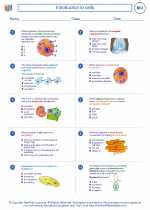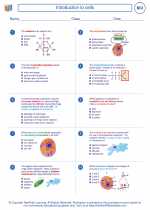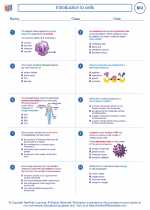Leaves
Leaves are an important part of plant anatomy and play a crucial role in the process of photosynthesis. They are the primary site for the production of food for the plant, and are responsible for the exchange of gases with the environment.
Structure of a Leaf
A typical leaf consists of a flattened blade and a stalk called the petiole, which attaches the leaf to the stem. The blade is usually green in color due to the presence of chlorophyll, the pigment responsible for capturing light energy during photosynthesis. The upper surface of the leaf is called the adaxial surface, while the lower surface is called the abaxial surface. The adaxial surface is often waxy to prevent water loss, while the abaxial surface contains stomata, which are small openings for gas exchange.
Internal Structure of a Leaf
- Epidermis: The outermost layer of the leaf, the epidermis, is covered by a waxy cuticle to minimize water loss.
- Palisade layer: This layer is located beneath the upper epidermis and contains chloroplasts for photosynthesis.
- Spongy mesophyll: This layer is located beneath the palisade layer and contains air spaces for gas exchange.
- Veins: The leaf is supported by vascular bundles, which contain xylem and phloem for the transport of water, nutrients, and sugars.
Functions of Leaves
Leaves perform several important functions for the plant:
- Photosynthesis: The primary function of leaves is to produce food for the plant through the process of photosynthesis, using sunlight, carbon dioxide, and water to produce glucose and oxygen.
- Gas exchange: Through the stomata, leaves exchange gases with the atmosphere, taking in carbon dioxide for photosynthesis and releasing oxygen and excess water vapor.
- Transpiration: Leaves also help in the process of transpiration, where water is drawn up from the roots through the xylem and evaporates from the stomata, helping to maintain the plant's water balance.
- Storage: Some leaves are modified to store water, such as in succulent plants, or to store food, such as in bulbs and tubers.
Adaptations of Leaves
Leaves have evolved various adaptations to suit different environmental conditions:
- Needle-like leaves: These are found in coniferous trees and help to reduce water loss in dry or cold environments.
- Large surface area: Leaves of plants in tropical rainforests have large surface areas to capture as much sunlight as possible for photosynthesis.
- Water storage leaves: Some plants have leaves adapted to store water, such as in succulents, to survive in arid environments.
- Modified leaves: Leaves can be modified into tendrils for climbing, spines for defense, or colorful bracts to attract pollinators.
Study Guide
To study leaves effectively, consider the following key points:
- Understand the structure of a leaf, including the external and internal features.
- Learn the process of photosynthesis and the role leaves play in this vital process.
- Explore the various adaptations of leaves and how they help plants thrive in different environments.
- Review the functions of leaves and their importance to the overall health and growth of a plant.
By understanding the structure, functions, and adaptations of leaves, you will gain a comprehensive understanding of this essential plant organ.
.◂Biology Worksheets and Study Guides High School. Introduction to cells

 Worksheet/Answer key
Worksheet/Answer key
 Worksheet/Answer key
Worksheet/Answer key
 Vocabulary/Answer key
Vocabulary/Answer key
 Vocabulary/Answer key
Vocabulary/Answer key
 Vocabulary/Answer key
Vocabulary/Answer key
 Vocabulary/Answer key
Vocabulary/Answer key
